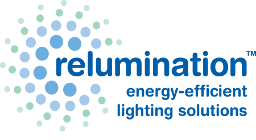Thanks to the rise of online stores (e-commerce), distribution centers that cater to this industry are busier than ever. They take orders from online store owners, and ship the products directly to the stores’ customers. This means that a high volume of goods are shipped every day in the form of small orders. Pulling this off efficiently is essential to staying competitive, and many of these warehouses try to cope by using sophisticated productivity technology.
However, if you manage such an operation, you shouldn’t overlook the basics, such as warehouse lighting. Your lighting affects productivity in a number of ways. Poor lighting causes more product picking errors from the inventory shelves. This means that the wrong products are shipped to customers, which result in costly product returns and lost customers.
Poor lighting also leads to eyestrain and worker fatigue. This is particularly the case when using dim and flickering fluorescent lights. Worker fatigue hurts you in two ways. First, tired workers are less productive, which means your operation’s efficiency suffers. Second, tired workers make more mistakes, which compounds the product picking error problem.
Poor lighting also increases accidents, especially in warehouses bustling with activity. Busy people sharing dimly lit aisles with busy forklifts are accidents waiting to happen. Inefficient lighting also puts out a lot of waste heat. This extra heat can make your warehouse unbearable during the summer months, which will require expensive air conditioning to keep your workers productive.
Many companies are solving their warehouse & distribution center lighting problems with LED lighting. Its bright and uniformly distributed output solves the visibility and eye fatigue problem. Unlike fluorescent lighting, it doesn’t flicker. LED lights are also energy efficient. Lighting converts electricity into heat and light. Efficient lighting turns more of that electricity into light, and less into heat. This reduced heat output means you can keep your workers cool with less air conditioning in the summer. This results in less energy consumption by your air conditioners and your lighting. Another benefit is reduced maintenance costs thanks to the longer life of LED lighting.
In conclusion, LED lighting increases the efficiency of your distribution center, and saves money on energy consumption and maintenance. Before spending a fortune on sophisticated productivity technology, try using better lighting first.
